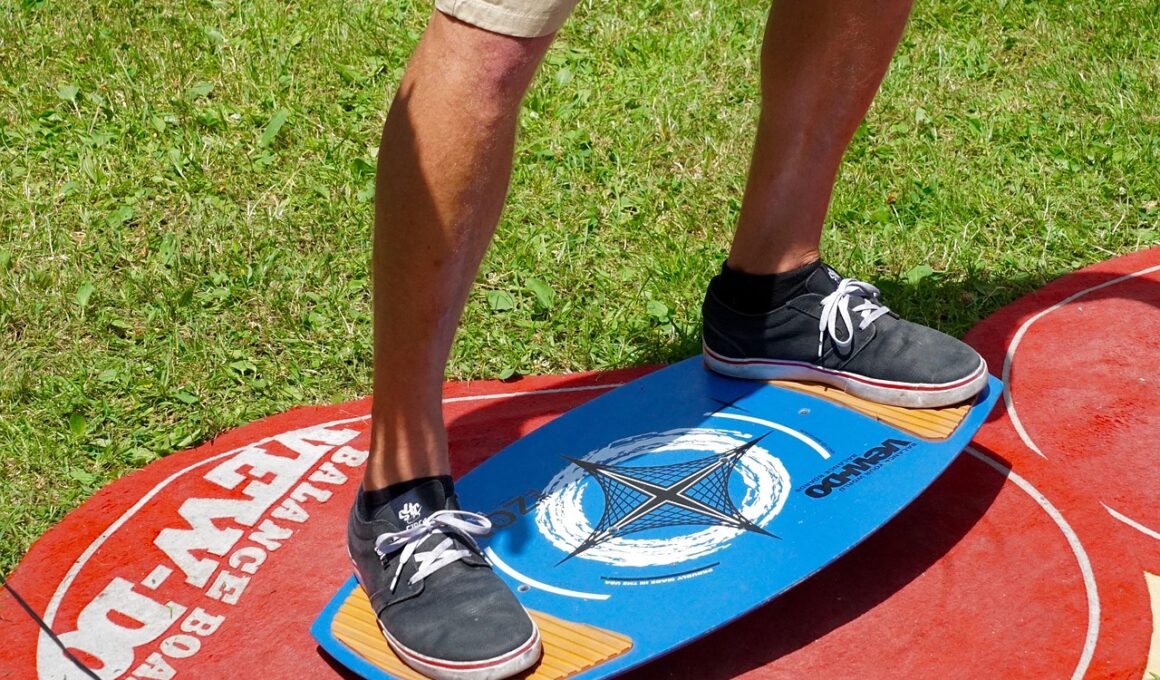Speed vs. Control: Finding Balance in Savate Footwork
In the dynamic world of Savate, footwork becomes the essential foundation for executing effective strikes and maintaining balance. It is crucial for practitioners to learn how to synchronize their speed with control in every movement they make. Speed helps in launching attacks swiftly, while control ensures that these strikes maintain accuracy and maintain proper form. Finding this balance can be the key to success in both training and competition. One fundamental aspect of Savate footwork is the ability to move in various directions swiftly. This versatility allows a fighter to dodge attacks and respond effectively. In doing so, training should focus on dynamic drills that enhance footwork, incorporating sprinting techniques that mimic fight situations. Regular practice helps a fighter adapt quickly, ensuring they can react fluidly during matches. Additionally, integrating agility training can greatly influence performance. Techniques like ladder drills or cone sprints can facilitate rapid, controlled movements. It is necessary for practitioners to integrate these methods into their regimen. Overall, practitioners must appreciate the intricate connection between speed and control, making adaptations to improve their skills in Savate footwork.
The Importance of Balance in Footwork
Achieving balance in Savate is more than just physical stability; it represents the harmony between power and precision during combat. Proper balance enables fighters to remain poised, ready to attack or retreat without losing control. When one focuses solely on speed, there’s a risk of becoming reckless. Conversely, prioritizing control without considering the pace can result in missed opportunities to strike. Therefore, mastering Savate footwork requires an understanding of how to shift weight effectively during movements. This process not only enhances a fighter’s stability but allows for smoother transitions between techniques. Practitioners can explore exercises targeting core strength, crucial when maintaining balance while delivering techniques. When a fighter possesses adequate core strength, their ability to pivot, strike, and defend effectively increases. Performance can be further enhanced through resistance training, tailored to simulate movements used during bouts. Routines incorporating these elements not only enhance strength but improve muscle memory as well. Ultimately, the aim should be to create a seamless combination of speed and control in footwork, contributing significantly to the overall effectiveness in the ring.
To further understand the relationship between speed and control in Savate footwork, let’s delve into specific techniques worth mastering. The Jab, which is a fundamental technique in Savate, requires quick footwork to position oneself correctly before delivering the strike. Ultimately, it emphasizes the need for precision as well as speed. Another key maneuver is the side-step, essential for evading your opponent’s strikes while maintaining an attacking position. Utilizing side-steps allows a fighter to counterattack swiftly without compromising their stance. Additionally, incorporating combination movements helps build a repertoire that blends speed and accuracy, ultimately leading to effective offensive strategies. Techniques like feinting can be employed as tactical distractions, enabling a fighter to create openings while adjusting the pace of the fight. Practicing these and other techniques on pads or with sparring partners will further integrate speed into one’s footwork while enhancing overall control in strikes. Moreover, it’s crucial to allow for reflection on how techniques adapt under pressure during practice sessions. Learning to execute movements fluidly amidst the dynamic environment of combat engages fighters to refine their skills further.
Drills to Enhance Speed and Control
Implementing specific drills designed to enhance both speed and control can greatly affect a fighter’s performance in Savate. Start with mobility drills that focus on quick foot placements and transitions. A drill called the ‘Shadow Footwork’ can be employed where a fighter performs footwork movements while imagining an opponent. This exercise encourages the body to react instinctively while building speed in movement patterns. Following that, ‘Cone Drills’ demonstrate how to navigate obstacles quickly, adjusting movements to maintain balance and control when shifting direction. Fighters can also benefit from practicing ‘Acceleration Sprints’ that replicate explosive movements needed in bouts while maintaining balance. These sprints can be performed in intervals, emphasizing quick bursts of speed followed by controlled tailing off. Furthermore, ‘Partner Drills’ where opponents attack, allowing fighters to practice defensive footwork in real-time, can also prove valuable. Adding a timer for these drills encourages an improvement in pacing and speed within controlled environments. Introducing a combination of these drills into a training regimen will undoubtedly refine footwork skills.
With practice and consistent assessment of performance, footwork can evolve, propelling a fighter toward mastery in Savate. It is not just about executing movements quickly, but rather how these movements flow into each other. Footwork should always enhance a fighter’s strategy, adapting to different fighting situations. Every sparring session provides valuable insights into what works and what needs adjustment. Listening to feedback from trainers or experienced fighters can also provide an opportunity for growth. By measuring their velocity in specific footwork drills, fighters can identify patterns to increase efficiency. Documenting progress and reflecting on how footwork integrates with other techniques can showcase strengths and areas that require attention in training. Moreover, embracing video analysis allows practitioners to observe their movements critically. What appears efficient in a controlled setting might vary in match scenarios. Remaining agile in adapting both speed and control can ultimately lead to confident execution during bouts. The journey entails finding personal strengths and refining techniques that synergize both speed and balance for optimal effectiveness on fight night.
Conclusion: Mastering Savate Footwork
In conclusion, the intricate dynamics of Savate footwork encapsulate the essence of martial arts—balance achieved through persistent practice. By merging speed with control effectively, fighters can enhance their combat skills significantly. This journey involves understanding the fundamental principles of balance in movement, engaging in drills designed to elevate both speed and control. Practitioners are encouraged to continue exploring various techniques and integrating them into their training sequences. An essential takeaway is that every fighter is unique, and finding a personalized balance in their footwork will lead to individual growth. Ultimately, it’s the determination and commitment to improvement that will define a fighter’s journey in mastering Savate footwork. Emphasizing both practical skills and a mindset geared towards continual learning will help aspiring martial artists excel. By valuing the practice of nuanced skills, participants can create effective strategies that reflect their style and preferences. As the art of Savate continues to adapt and evolve, so too should the methods and focuses of practitioners. Through this, athletes demonstrate resilience and the desire to find their rhythm amid the fast-paced world of combat training.
Fostering relationships within the Savate community can also serve to enrich one’s training experience. Engaging with fellow martial artists provides diverse perspectives on technique, strategy, and footwork applications. It opens up opportunities for collaboration during training sessions and allows for exploring new ideas collectively. Attending seminars or workshops can introduce fighters to renowned instructors, offering unique insights and methodologies. Additionally, observing experienced fighters in action can inspire personal refinement in technique and execution. Observing how seasoned fighters balance speed and control can provide actionable insights into improving one’s skillset. As martial arts are inherently about sharing knowledge, it is crucial to embrace the community and resources around you. The tireless effort to cultivate skills and the willingness to refine them is what pushes practitioners to success. It’s through these interactions that fighters can continuously learn and develop both personally and athletically. Finding balance in Savate footwork is an art form, and mastering it is a lifelong pursuit, full of learning, discovery, and growth.
Before closing, it’s vital to remember that the competition environment presents unique challenges. Cultivating the ability to adapt footwork under stress is essential. Sparring with various opponents exposes fighters to differing styles, pushing them to adjust their strategies on the fly. These experiences can significantly enhance reflexes, turning theoretical understanding into practical skills. Sparring simulations create unpredictable situations that require immediate tactical responses. Whether it’s perfecting the timing of a defensive maneuver or learning to exploit an opening quickly, each experience contributes to a better fighter. Furthermore, understanding how to pace oneself during competition is an important lesson. Combating exhaustion while maintaining speed and control becomes intricate, blending strategic thinking with physical prowess. Just like in practice, reflecting on performance post-competition can reveal strengths and points for improvement. Evaluating the effectiveness of footwork tactics used can provide a clearer picture of areas that need adjustments. The goal remains the same—to strike the right balance between speed and control, thereby ensuring a fighter’s success in the Savate arena.


